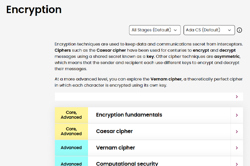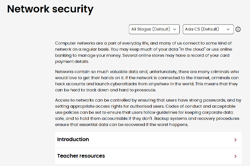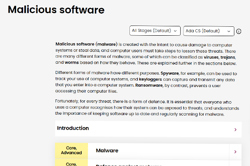The eSafety Guide: Games, apps and social networking
The site focuses on how to remain cybersafe whilst using the applications, how to gain more information and what to do if a user feels their cybersafety has been breached.
Additional details
| Year band(s) | 5-6, 7-8, 9-10 |
|---|---|
| Content type | Article or research |
| Format | Web page |
| Core and overarching concepts | Privacy and security |
| Australian Curriculum Digital Technologies code(s) |
AC9TDI6P07
Select and use appropriate digital tools effectively to create, locate and communicate content, applying common conventions
AC9TDI6P08
Select and use appropriate digital tools effectively to share content online, plan tasks and collaborate on projects, demonstrating agreed behaviours
AC9TDI6P10
Explain the creation and permanence of their digital footprint and consider privacy when collecting user data
AC9TDI8P11
Select and use a range of digital tools efficiently, including unfamiliar features, to create, locate and communicate content, consistently applying common conventions
AC9TDI8P12
Select and use a range of digital tools efficiently and responsibly to share content online, and plan and manage individual and collaborative agile projects
AC9TDI8P14
Investigate and manage the digital footprint existing systems and student solutions collect, and assess if the data is essential to their purpose
AC9TDI10P12
Use simple project management tools to plan and manage individual and collaborative agile projects, accounting for risks and responsibilities
AC9TDI10P14
Apply the Australian Privacy Principles to critique and manage the digital footprint that existing systems and student solutions collect |
| Keywords | Cybersafety |
| Organisation | Office of the eSafety Commissioner |
| Copyright | Commonwealth of Australia. May be subject to Copyright Act statutory licence. |
Related resources
-

Encryption
This comprehensive online guide, provides a background to encryption.
-

Network security
This comprehensive online guide, provides a background to network security. This topic has information on encryption and authentication .
-

Malicious software
This comprehensive online guide, provides a background to malware. Malicious software (malware) is created with the intent to cause damage to computer systems or steal data, and computer users must take steps to lessen these threats.
